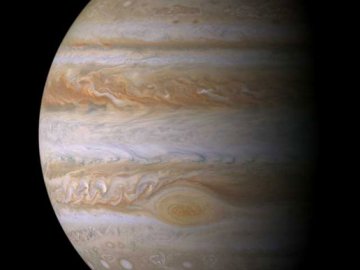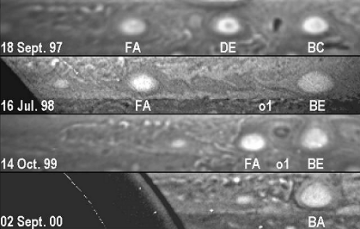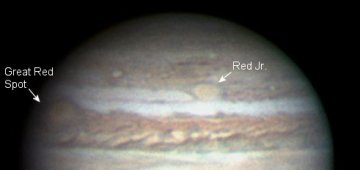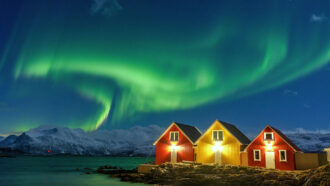Jupiter’s Second Red Spot
Several huge storms have merged to give Jupiter a second red spot.
By Emily Sohn
Saturn may have its rings, but Jupiter’s got a big red spot. Make that two.
 |
|
Jupiter’s Great Red Spot (near bottom, center) is the most powerful storm in the solar system.
|
| NASA |
Jupiter’s famous Great Red Spot now has a sidekick. Called Oval BA, the new red spot is about as wide as Earth. The Great Red Spot, which is the most powerful storm in the solar system, is twice as big.
Oval BA formed from three storms, visible as white ovals, that were discovered in the 1930s. The storms merged in 2000, and the resulting spot remained white until December 2005. Then, it turned brown. By February, the raging storm had become red, reports amateur astronomer Christopher Go from the Philippines.
 |
|
This set of images shows three storms on Jupiter (top: FA, DE, and BC), seen as white ovals, that merged in 2000 to form a single, larger storm, Oval BA (bottom).
|
| NASA |
Scientists don’t know whether Oval BA will stay red. In fact, they don’t know why either spot is red in the first place.
One idea is that powerful storms churn up certain compounds from underneath the clouds and lift them to high altitudes. There, the sun’s ultraviolet rays can cause chemical reactions to produce compounds that appear red.
If true, this theory suggests that Oval BA has recently become stronger.
 |
|
Jupiter’s new red spot was photographed on Feb. 27 by Christopher Go, an amateur astronomer in the Philippines, who used an 11-inch telescope and a special digital camera to capture the image.
|
| NASA |
If you have access to a telescope with a mirror that is 10 inches across or larger, you should be able to see the new red spot—as long as you’re willing to get up early.
Before sunrise, look south and up. The planet is the brightest object in the predawn sky right now.—E. Sohn
Going Deeper:
Cowen, Ron. 2006. Another red spot, by Jove. Science News 169(April 8):222. Available at http://www.sciencenews.org/articles/20060408/note16.asp .
Additional information about storms and spots on Jupiter can be found at science.nasa.gov/headlines/y2000/ast24oct_1.htm and science.nasa.gov/headlines/y2006/02mar_redjr.htm (NASA).







